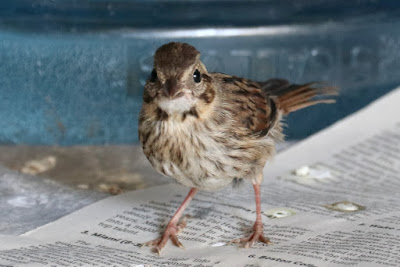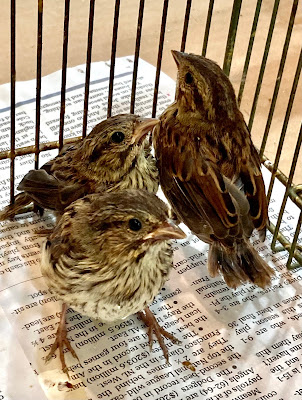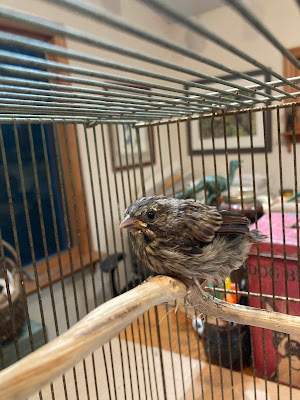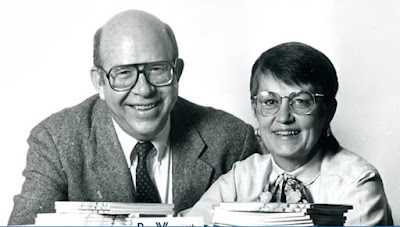I always figured I'd be a career illustrator. And I was, for a long time. I did my first illustration for pay as a freshman in college, and slowly built a clientele from 1976 onward. By around 1988, I was chugging along doing commissioned watercolors at (gulp) $50 to $75 apiece. I wonder where some of those are now. Lots of book and magazine illustration; some packaging art; even got some drawings into The New Yorker. I enjoyed it all.
Around 2004, I decided that it was time to write and illustrate my own books. If I kept taking illustration jobs, I'd never be able to create a book of my own. Bill helped me with that, so much. "Just do a compilation of stuff you've already written! Your columns would make a great book!" Well, I had years of columns from the Backyard Bird Newsletter, which was sent out to a smattering of Bird Watcher's Digest's subscribers in the off months when the magazine wasn't coming out (it was a bimonthly, six issues a year). And they were pretty good--I was writing with a lot of heart and fire at that point. So they'd been published, but not to a wide audience, and they needed to be put together in a book. Bill was so right: it was a good, accessible, nonthreatening way to put my first book together. And I had the best little partner helping me along then. That boy could sell books.
Chet Baker, May 2006, age 3, with Mether's First Book.
Letters from Eden came out in 2006, with a truly ridiculous number of paintings and sketches inside. I really loved illustrating my own writing, and decided to do that from then on. There followed The Bluebird Effect in 2012, and Baby Birds in 2016. Saving Jemima came in 2019. After saying yes to almost every job that had come down the pike since 1976, it felt weird to turn down jobs, but I had to if I was going to finish my books. It was while I was writing The Bluebird Effect that I also realized that daily blogging was a huge block to my productivity, so I cooled it a bit on the frequency of my posts. Every day? Really? What was I thinking??
As I think about it, painting commissioned watercolors is in many ways a return to my old illustration days, when I enjoyed the challenge of creating a work of art with specific elements requested by the client. Some are very loose (perhaps just giving me the species of bird and leaving the setting up to my discretion), but most are pretty exacting and specific. People want a bird in a specific place, and sometimes it goes farther than that. The painting I'll show you now is one of the most exacting I've done, but I loved every minute of creating it. It presented more than an ordinary challenge.
This client is an ornithologist who has studied phoebes for much of his career. He wanted a painting of a Say's phoebe in the Smoky Hills of Kansas. This is a region known for distinctive chalk bluffs which rise up out of the ancient prairie like buildings. It's also known for its limestone fenceposts (lacking trees, I suppose, they made them out of the material at hand). My client wanted those in the painting. And native sunflowers, and yucca (!). He wanted the phoebe to be large in the frame. That would be the biggest challenge of all--to convincingly place a very small bird in a limitless landscape.
That is, in fact, the challenge that I face over and over as a bird painter. If someone likes a bird enough to request a painting of it in a specific place, they want to see the bird in detail. But how do I convey the vastness of the Kansas prairie, while placing a 7" bird in it right up close? Much to think about.
I don't have photos of my compositional phase, which is a lot of scribbles in soft pencil on large paper.
I shot some drafts to the client and got approval and tweaks, too. One of the things that became abundantly clear was that I couldn't use a limestone fencepost as a perch, because the post was too huge in relation to the bird. To be true, the post would have to be maybe twice the size it is in this draft composition, which was unacceptable to my eye. So I decided to put the bird on Maximilian sunflowers, which are in much better scale to its size.
The post is probably 1/4 the size it needs to be here in relation to the bird, and even that is getting a bit too big for the composition. Let's go to Plan B, push the posts into the middle distance, and put flowers up front instead.
Then I painted the most important thing: a half-sized study of the painting which would be my guide for executing the real thing. I just Xeroxed my sketch onto some watercolor paper, stretched the paper and painted it as quickly and messily as I could. In the process, I figured out what to do and what not to do; what to paint first and how to handle a very complex and (to be honest) rather vexing foregound.
I traced the composition onto a large sheet of watercolor paper (Winsor & Newton), then stretched the wet paper on a board using packing tape on the edges.
When it dried, I applied masking film and masking fluid around its edges to the parts I wanted to paint last. Then I could paint the landscape freely over those masked parts, knowing I could peel the mask off and have nice white paper to work on when the landscape was done. You can see here that the sunflowers and bird are masked off as a chunk. Same for the chalk bluff in the middle distance, and the white limestone fenceposts staggered across the prairie.
I learn a lot by looking at my colleagues' work, and I decided to try a technique the Barry Van Dusen explains in his magnificent book, Finding Sanctuary, which was published by the Massachusetts Audubon Society and Puritan Press.
If you're curious, here's my post about Barry's work, and a guest post from Barry himself.
If you click that link you probably won't come back to see my stuff! But I hope you do.
Anyway, Barry mixes a neutral tint (I think it's ultramarine, burnt sienna and ultramarine violet) and paints the shadows in his paintings before adding any color. This is completely different from the way I usually work, but I wanted to try it here. I'm self-taught, and never learned the proper way to paint.
Here I go, tickling in those shadows.
So far, so good. I marched the shadows up to the middle ground. I was so excited to see how it would look with the prairie greens over the tinted shadows!
Well, that's cool! Here's a little close-up of the far-out ridges. I love those shadow colors of distant hills.
Something about having the shadows already in made it less scary to handle these wide-open spaces.
My work always gets harder, the closer to the foreground I get.
Grasses are my nemesis. Making them look realistic without getting too regular and fussy always stretches me to the limit. I look at
Cindy House's pastel paintings and just cannot believe how well she handles grass. She ENJOYS painting grass. There's So Much Grass here. I knew, because its leaves were so delicate and thin, that I would be unable to mask out the yucca plant in the right foregound, so I painstakingly painted it in opaque gouache over the grassy foreground.
Only when I had the foreground grasses under control would I allow myself to start on the Maximilian sunflowers and chalk bluff. I peeled off the masking film and rubbed the dried masking fluid away with my fingers and a soft white eraser.
Because it was September, I could go out and cut Maximilian sunflowers on my very own prairie patch and paint it from life! That was awesome.
Oh look! A song sparrow. I think I know him...
The sunflowers brought a needed touch of green to a rather sere landscape. I did not want to do a big green painting. Greens can get away from you. So I kept them very dialed back.
Here come the sunflowers! I still have the limestone fenceposts masked out here.
I got absorbed in the fenceposts and painted the chalk bluff, too, before I remembered to take another shot.
One of the ways you say, "It's sunny" is to paint deep sharp shadows on things like bluffs and fenceposts. I could feel the light pouring through, and the sky wasn't even in yet.
I couldn't wait to paint the sky! All the shadows were in--now I need a sky that will convince you it's sunny out!
But first the Say's phoebe--such a subtly beautiful bird it is. I painted a fresh immature with cinnamon wingbars and a strong cinnamon wash below.
All in but its black tail!
It's sky time, y'all. No progress photos on the sky--that happens too fast to take pictures, and all wet on wet! I am particularly pleased with the perspective of the clouds going off in the distance, and the sunny space they create in the landscape beneath. They're blurry, which for me evokes the prairie wind, which never stops. The sunflowers are tossing in that wind.
I didn't want to pack this one up to send. Sometimes I wish I could keep my paintings. But off it went, to Kansas, where it truly belongs.
Say's Phoebe in the Smoky Hills, Kansas. Private Commission, October 2021 Watercolor, 14" x 18"
































































Monday, January 31, 2022
5 comments